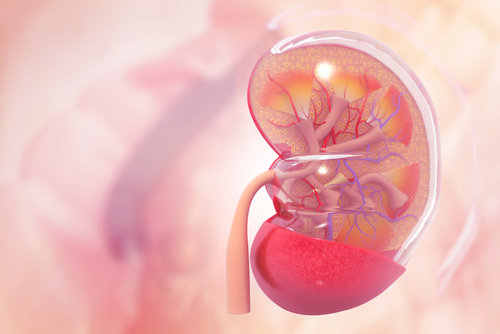Markers of Renal Outcomes in Subclass of ANCA Vasculitis Patients Found, Study Says
Written by |

Glomerular filtration rate (GFR), a kidney function marker, and the presence of atrophy in the kidney’s tubules predict renal survival in ANCA vasculitis patients with the sclerotic class of glomerulonephritis (ANCA GN), a study says.
These findings also revealed that patients requiring hemodialysis — a treatment that purifies the blood when the kidneys are not working properly — respond poorly to immunosuppressants, and go on to develop end-stage renal disease (ESRD).
The study, “Predictors of Renal Outcomes in Sclerotic Class Anti-Neutrophil Cytoplasmic Antibody Glomerulonephritis,” was published in the American Journal of Nephrology.
Severe kidney malfunctioning is associated with poor prognosis in patients with ANCA GN — a type of kidney inflammation caused by anti-neutrophil cytoplasmic autoantibodies (ANCAs). Prior studies have shown that combining initial GFR values with renal biopsies outperforms GFR alone at predicting renal outcomes.
A classification system proposed in 2010 puts kidney biopsies into four categories — focal, crescentic, sclerotic, and mixed — based on the appearance of lesions in the glomeruli, the kidney’s filtering units. Subsequent studies have validated this classification’s predictive value for renal survival in the focal and sclerotic classes.
Specifically, the sclerotic class had the worst short- and long-term renal survival. But one- and five-year renal survival in treated patients is approximately 50%, which suggests that kidney function can be stabilized.
The researchers in this study intended to address the lack of data on prognostic markers of renal outcome among patients with ANCA GN in the sclerotic class. Their retrospective study recruited 50 patients from five different countries.
Of the selected patients, 60% were men, 92% were Caucasian, and 72% had renal-limited disease. In addition, 82% were positive for MPO, and 16% for the PR3 antibody. Both are types of ANCAs.
Sclerotic class ANCA GN was defined as having more than 50% of glomeruli with global sclerosis (stiffening).
A total of 48 patients were treated with immunosuppressants, and eight also received plasma exchange. Only one patient did not respond to the treatment. Responses in patients occurred in the first four to six months of follow-up. In contrast, the two patients who did not receive immunosuppressants developed ESRD.
Relapse occurred in nine of the responsive patients, five of which involved the kidneys. Of the patients, 26 reached ESRD over a median follow-up of 33.5 months. Ten patients died, six within the first year of diagnosis. Three deaths were infection-related: one was due to a femoral neck fracture, and two of undetermined causes.
ESRD occurred in 15 of the 38 patients not requiring hemodialysis, and 11 of 12 on this treatment at the beginning of the study. Only one of these 12 patients responded to treatment.
ESRD progression was significantly faster in patients with a lower eGFR at the beginning of the study and those who had a higher degree of tubular atrophy. Hemodialysis dependence at study entry, along with a higher degree of tubular atrophy, were also associated with increased ESRD risk.
“In this study, baseline [initial] GFR and tubular atrophy are predictors of both 1-year GFR and overall renal survival,” the scientists wrote. The findings also show “that renal recovery is very rare among patients who are dialysis dependent at [study] entry.”





